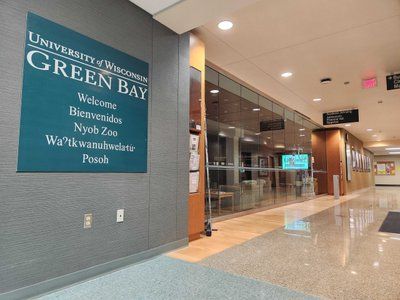By Tom Still
MADISON – Manuel Perez, who leads the state agency that deals with workforce issues ranging from unemployment benefits to training, is no stranger to the human resources business. He’s a labor market economist who was an executive for Milwaukee-based Manpower Inc. and later owned his own staffing company, JNA Staffing.
So when Perez talks about Wisconsin’s workforce development advantages – and a few challenges – he does so with the benefit of years of private-sector experience.
Perez, a Venezuela native who came to Wisconsin nearly 35 years ago to attend college, is bullish on the state’s workforce advantages, which he believes are a tangible part of the overall effort to make “Wisconsin is Open for Business” more than a slogan.
He spoke last week at a board meeting of the Wisconsin Technology Council, a statewide group made up of leaders from the tech sector, investors, educators and service professionals, to drive home his message that developing a 21st century workforce is essential to attracting 21st century businesses and jobs.
“We want to advance Wisconsin’s economy through a workforce development system that attracts, creates and retains jobs, and which empowers individuals to become self-sufficient,” said Perez, who became Gov. Scott Walker’s workforce development secretary in January. “We want to be your partners in building that workforce.”
While it’s often anecdotal, such as good-news stories told by employers who move to Wisconsin and discover they can hire workers who actually work, there’s also empirical evidence to back Wisconsin’s vaunted work ethic.
One such measure is the workforce participation rate, which has historically exceeded the U.S. average. It’s a measure of how many adults are actually employed, even if it’s part-time. In December 2010, Wisconsin’s workforce participation rate was about 69 percent compared to about 65 percent nationally.
But Perez also understands the state’s workforce participation rate could drop as Wisconsin’s population ages, there are fewer two-earner families, or the state fails to attract the kind of highly skilled workers – many of whom are from other states or nations – needed to expand the economy.
The Workers’ Compensation system in Wisconsin is another advantage for employers, Perez noted. Workers’ compensation laws across the nation help protect workers who are hurt or become sick because of problems on the job.
The average cost per case in Wisconsin is fifth best in the nation, according to national labor statistics, at roughly $7,500 per case. That compares to about $18,000 in Illinois, which is fourth highest in the nation, and about $12,000 in Minnesota, which is near the middle of the 50-state pack.
Workers’ compensation premiums in Wisconsin per $100 of wages paid are under $6, which is the best in a five-state region that includes Michigan, Iowa, Minnesota and Illinois, which stands at nearly $12 per $100 in wages. The Workers’ Compensation system in Illinois is considered so costly and bureaucratic that Gov. Patrick Quinn recently proposed system-wide changes to guard against fraud, cut red tape and save employers money.
“We have a strong workforce safety culture” that helps keep Workers’ Compensation costs low by preventing many job-related injuries and illnesses from happening in the first place, Perez said.
Because Wisconsin is the nation’s No. 2 state in per capita manufacturing employment, perhaps it’s no surprise the state would also be No. 2 in the number of workers gaining advanced certifications. But it’s also a leading indicator of the modernization of Wisconsin manufacturing, which continues to increase productivity thanks to commitments to safety, quality, technology and improved processes. Nearly 3,000 manufacturing workers in Wisconsin earned advanced certificates in 2010, the Department of Workforce Development reported.
Wisconsin is not without its workforce challenges, of course. The percentage of adults with four-year college degrees continues to run behind the U.S. average – about 25.7 percent in Wisconsin versus 27.9 percent nationally, 31.5 percent in Minnesota and 30.6 percent in Illinois. That’s mitigated, at least in part, by the state’s above-average number of degree-holders from two-year colleges, such as the Wisconsin Technical College System.
To truly be “open for business,” Wisconsin needs skilled workers of all types – from recent college grads to older workers who have sought retraining, to people from outside Wisconsin who want to live and work here. If Wisconsin businesses need a willing partner in finding those workers, Perez says he’s ready to help.
Still is president of the Wisconsin Technology Council. He is the former associate editor of the Wisconsin State Journal.
###





